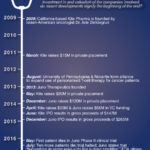In October, a 14-year-old British girl terminally ill with a rare form of cancer won a historic legal battle to have her remains cryogenically frozen in the hope that she could one day be brought back to life. The girl was supported by her mother in her wish to be preserved, however her father was against the procedure, sparking a unique court battle with wide-ranging ethical implications.
The court ultimately ruled in favour of the mother, resulting in the girl’s remains being taken to the US for preservation at a cost of £37,000 to the family. High Court judge Mr Justice Peter Jackson states he viewed the issue as a dispute between parents regarding the disposal of their daughter’s body, however his ruling has sparked a divisive ethical debate amongst medical professionals regarding the rights and wrongs of cryonics.
The Business of Cryonics
Globally there are 4 organisations involved in cryonics. The original two organisations, Alcor and the Cryonics Institute, are both based in the USA. The third organisation is Russia-based KrioRus, and the most recent cryonics company is Australia-based Stasis Systems.
Irrespective of where it’s done, the mechanics of the cryonics involves draining a patient’s fluids and replacing them with a vitrification solution, which is essentially a preservative cocktail of cryoprotectant chemicals that are believed to prevent ice crystal formation and reduce the extent of tissue damage that occurs after flesh is frozen. The body is then allowed to cool and placed in liquid nitrogen vat, often called a Dewar, for indefinite preservation at -196°C. The aim of vitrification is to ensure that the cells, organs etc. are not damaged by the freezing and in the future thaw process, although its is acknowledged that damage does occur. The hope is that scientific discoveries, particularly those relating to nanotechnology, will allay those side effects, in addition to required discoveries that will treat disease or ailment that led to death in the first place.
The History of Cryonics
The concept has a long history and can be stated to have started by American Academic Robert Ettinger in 1946.

The Financial Costs of Cryonics
To its credit the business model being applied to the Cryonics’ industry is not-for-profit. This should at least allow a longevity of the business, if not the individuals stored.
The Cryonics Institute charges a minimum fee for cryopreservation of $28,000 but there are additional costs for preparing and transferring the corpse. Alcor charges $80,000 for “neurocryopreservation” (the head only) and $200,000 for the whole body, but this includes all costs and perpetual maintenance. KrioRus offers a service starting at $12,000, although since it is based in Russia its services to foreign clients are “more complicated and expensive”. Cryopreservation can be covered by special insurance policies that cost $40-60 per month depending on health and age, but premiums can increase each year in line with inflation.
Regulatory & Ethical Concerns
Of concern is the background of those involved in the industry, as the sole requirements for creating a cryonics company are a strong belief in the philosophy of Ettinger and a willingness to do it. There are currently no serious scientists involved in the industry, and more importantly no regulators to ensure that quality processes are being adhered to if any exist. This contrasts with frozen embryo storage, where global regulatory oversight is already in place or in development.
Alcor and The Cryonics Institute are particularly adept at linking on their websites to scientific studies associated with ‘resurrection’ activities including nanotechnology advances and advances in organ storage. Collectively this provides a gloss of scientific credibility that can influence individuals struggling to cope with the realities of death.
Whilst individuals have every right to consider this process and should be free to do so upon balanced review of the information available, several unanswered questions remain: who will pay to bring them back if it is ever possible; how much would it cost; who would do it and why? People who have signed up are only paying for storage not resurrection, in whatever form that may be. Imagine a hypothetical scenario that we could do resurrect individuals today at a cost $10M per person. That’s $3.28B required to bring back the 328 individuals currently in cryogenic storage.
From philanthropic point of view, such a sum is likely to have more pressing needs for those that are still alive. Whilst the thought of cryogenic preservation may provide comfort to the terminally ill, the current scientific consensus is that resurrection remains a figment of science fiction.
You can download a PDF copy of our Cryonics Timeline via the button below:





